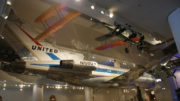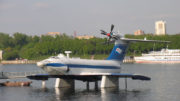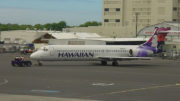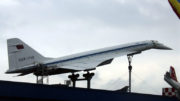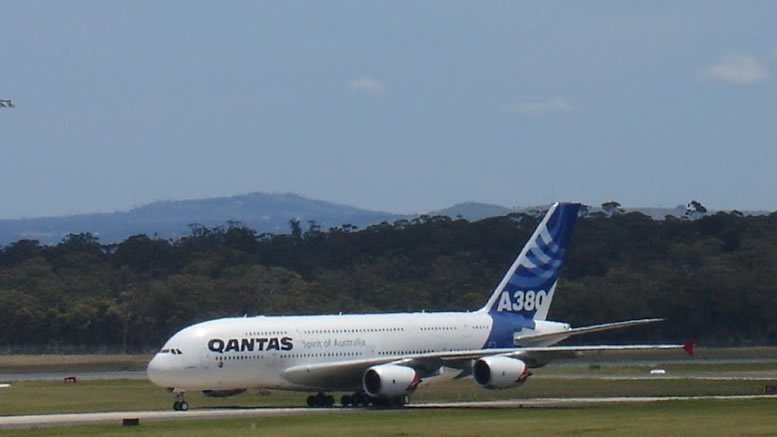 The Airbus A380 created some challenges for the development team at Airbus. Typically all of the Aircraft Airbus makes is constructed in up to 4 different countries and the all the various parts are brought together for final assembly in France. The A380 is no different as its components are built in the UK, Spain, Germany and France, but the size of the A380s major components means the A300-600 Super Transporter, the distinctively-designed air freighter which normally ferries the main sections of Airbus aircraft from its European cannot be used instead a range of giant barges and trucks that were specially built are used to transport all the parts.
The Airbus A380 created some challenges for the development team at Airbus. Typically all of the Aircraft Airbus makes is constructed in up to 4 different countries and the all the various parts are brought together for final assembly in France. The A380 is no different as its components are built in the UK, Spain, Germany and France, but the size of the A380s major components means the A300-600 Super Transporter, the distinctively-designed air freighter which normally ferries the main sections of Airbus aircraft from its European cannot be used instead a range of giant barges and trucks that were specially built are used to transport all the parts.
Major components such as the fuselage and vertical tail unit are manufactured and assembled at the Nordenham, Stade, and Hamburg sites in North Germany. Commercial Final Assembly activities also take place in Hamburg, with all the commercial installations, including the fitting of the cabin interiors, painting, final inspection and eventually delivery to customers in Europe and the Middle East.
The fuselage shells are produced in Nordenham and are then shipped to Hamburg in large special containers using a roll-on-roll-off system.
Once in Hamburg, the fuselage shells are assembled in the newly-built Major Component Assembly. The Hamburg plant delivers three A380 fuselage sections: the forward section behind the cockpit, the rear fuselage section, and the upper half of the fuselage shell above the wings which is transported to St Nazaire for further assembly.
In Hamburg, the rear fuselage and part of the forward fuselage are loaded on to the Ville de Bordeaux, a 154-metre roll on/roll off (ro-ro) ferry purpose-built for the operation. She sails to Mostyn Harbour in Wales to be met by a barge which has twice travelled 35 kilometres along the River Dee, each time bearing one wing built at Broughton.
Broughton is where final assemble of the wings take place from small components built there and at Filton, near Bristol in North Wales. Built in what is known as the “West Factory” it is believed to be the largest factory built in the UK in recent years with the floor area equivalent to 12 full size football pitches.
Once assembled A380 wings are dispatched individually from the factory by road to the nearby River Dee, then by river-craft to Mostyn where a pair are loaded onto the Ville De Bordeaux for transportation to France.
At St Nazaire she swaps the partly-built forward fuselage for a complete forward fuselage with cockpit as well as a complete centre fuselage. Further on, at Pauillac, the parts, supported on giant jigs, are unloaded on to a pontoon using a multiple purpose vehicle. The vessel then sets off to Cadiz, Spain before returning to Pauillac, France.
Airbus plants in Spain produce the horizontal tail plane, the rear fuselage tail cone and the belly fairing for the A380. They provide Airbus with world-beating expertise in the use of composite materials.
New assembly halls for the A380 horizontal tailplane and belly fairing have been built at Getafe and Puerto Real. At Illescas, innovative technologies are used at the advanced composites centre, allowing for the manufacture of large curvature panels.
The A380 horizontal tailplane is designed and initially assembled at Getafe, with parts manufactured at Illescas, where an extension houses new fibre placement machines. It is then sent to Puerto Real for final assembly and the installation of the hydraulic, electrical, fuel and flight control systems and final testing. The specially-built A380 transport ship, the Ville de Bordeaux, collects the tailplane from Puerto Real for the journey to back to France.
At Pauillac the parts are transferred from the pontoon to another barge which transports them – making four trips in all – 95 km along the River Garonne to Langon where they are transferred via a wet lock to a convoy of trailers. The convoy then travels 240 kms by road to Toulouse and final assembly, always at night and at low speed to minimise disturbance. With two daylight parking stops along the way each journey takes three nights to complete.
As the trailers – with cargoes up to eight metres wide and 50 metres long – pass along the route, the drivers are guided by a cabin computer which uses advanced Global Positioning Satellite technology to pinpoint to within one centimetre where their trailer is placed in the road.

